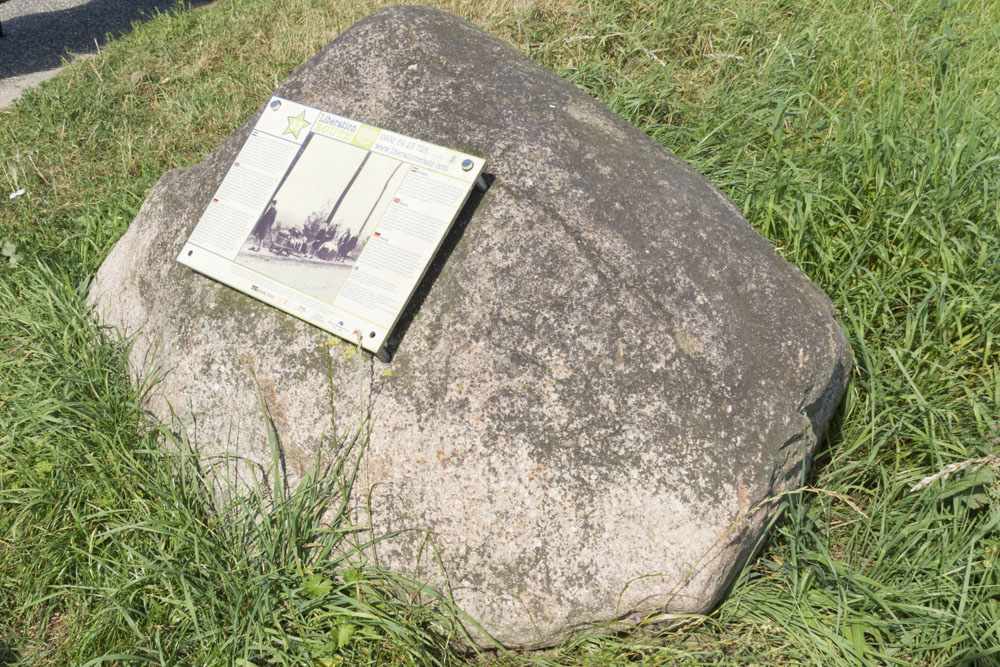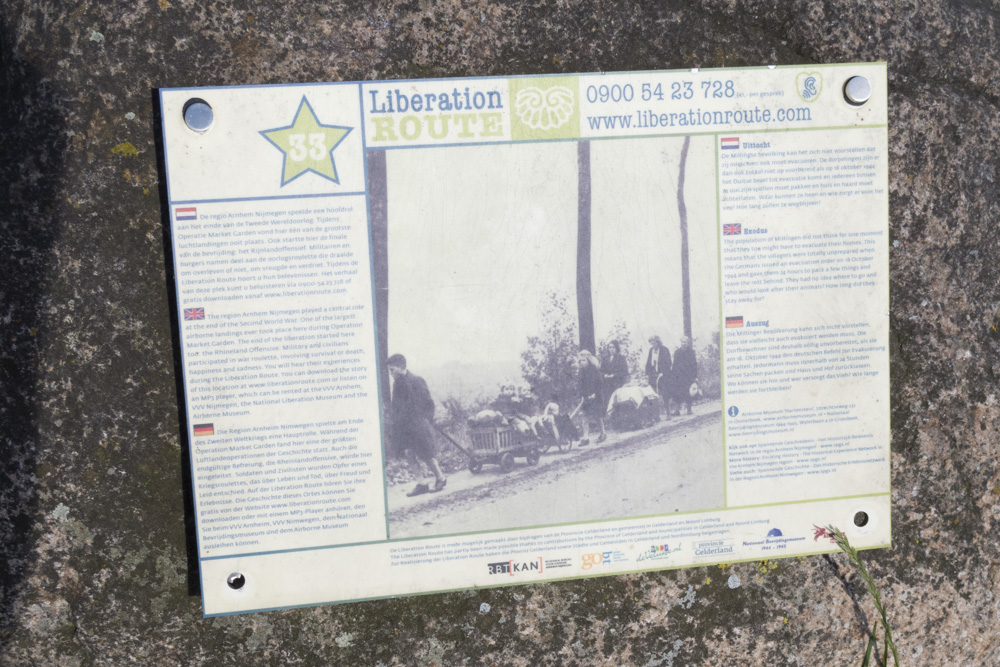Liberation Route Marker 033: Exodus
Exodus
The population of Millingen did not think for one moment that they too might have to evacuate their homes. This meant that the villagers were totally unprepared when the Germans issued an evacuation order on 18 October 1944 and gave them 24 hours to pack a few things and leave the rest behind. They had no idea where to go and who would look after their animals? How long did they stay away for?
The Allies advanced quickly through France and Belgium in the summer of 1944. So quickly, that there had been no time to evacuate the civilian population from the area. Even if there had been, the people would have soon been overtaken by the fast-moving troops. Once the frontlines had stabilised, both the German and the Allied forces started evacuating civilians on both sides of the battle lines. The reasons for evacuating were numerous: to protect the civilians from being hurt or killed; to get them away from the battle ground so they could concentrate on fighting; and to remove any potential spies from the area.
More often than not, people were given very little notice and had little time to pack possessions. They were only allowed to take what they could carry, either on their backs or in carts and would end up a long way from home. In fact, the population of Millingen ended up in the north of The Netherlands and some of the people of Groesbeek, who were evacuated by the Allies, even ended up as far away as West Flanders in Belgium.
Audiospot - Exodus
Liberation Route Europe is a certified Cultural Route of the Council of Europe. With hundreds of sites and stories in nine European countries, the route links the main regions along the advance of the Allied Forces in 1943-1945.
The entire route consists of themed routes that can be travelled by by hiking, walking, cycling and car. These routes pass numerous historical and interesting sites and tell stories from a multitude of perspectives that were important in the final phase of World War II.
Many routes feature listening spots, offering the opportunity to listen to a historical story at a location. In addition, many ‘Vectors of Memory’ have been placed, indicating that the passer-by is on one of the Liberation Routes.
The routes can be found on the Liberation Route Europe website or in the app through which many stories can also be listened to.
Do you have more information about this location? Inform us!
Source
- Text: TracesOfWar & Liberation Route Europe
- Photos: Arjan Vrieze
Nearby
Museum
Point of interest
- Military Police Detachment Lobith - Tolkamer - Tolkamer
- Border Guard Command Post Aerdt - House Aerdt - Herwen
- Castle Doornenburg - Doornenburg
Monument
- War Memorial Millingen aan de Rijn - Millingen aan de Rijn
- Liberation Route Marker 034: Pauke pauke! - Tolkamer
- War Memorial Pannerden - Pannerden
Cemetery
- Commonwealth War Graves General Cemetery Tolkamer - Tolkamer
- Memorial Stone Reinhold Franck Cemetery Keeken - Keeken
- Commonwealth War Grave Roman Catholic Cemetery Herwen - Herwen
Remembrance Stone
- Stumbling Stones Markt 61 (former A 271) - Zevenaar
- Stumbling Stones Nieuwe Doelenstraat 4 (former A 152) - Zevenaar
- Stumbling Stones Didamsestraat 18 (voormalig A297) - Zevenaar
Fortification
- Fort Pannerden - S3a - Casemate 1 - Doornenburg
- Fort Pannerden - Szw Fr - Casemate 7 - Doornenburg
- Fort Pannerden - Szw Fr - Casemate 2 - Doornenburg





